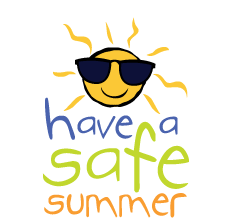 Dehydration The little ones, especially, forget to drink or to tell you that they need to drink. If you find the children not looking well and/or getting cranky toward the afternoon, it might be because they’re tired, or it might be because they’re dehydrated. Remember: By the time a person feels thirsty, he’s already partly dehydrated, so drink to prevent thirst, not to quench it. Common symptoms of dehydration are crankiness, headaches, aches in the joints and weariness. And don’t allow your child to fill up on juice or soft drinks; these are dehydrators. Water or child-appropriate hydrating drinks are best.
Dehydration The little ones, especially, forget to drink or to tell you that they need to drink. If you find the children not looking well and/or getting cranky toward the afternoon, it might be because they’re tired, or it might be because they’re dehydrated. Remember: By the time a person feels thirsty, he’s already partly dehydrated, so drink to prevent thirst, not to quench it. Common symptoms of dehydration are crankiness, headaches, aches in the joints and weariness. And don’t allow your child to fill up on juice or soft drinks; these are dehydrators. Water or child-appropriate hydrating drinks are best.
However, if you or your child has severe dehydration (dry mouth, sunken eyes, reluctant to drink, unable to pee or cry, high fever, lethargy), call for emergency help and have your child sip an electrolyte-replacement fluid (such as Pedialyte).
Hot Cars: Don’t EVER leave children alone in the car — not even for a moment. Besides the danger of abduction, the temperature in a car can skyrocket in minutes. And, if you see an unattended young child in a vehicle, please call 911, the police or other emergency personnel. Your call could save the child’s life.
Drowning: Always actively supervise children in and around water. Infants and children can drown in bathtubs, swimming pools, ponds or almost any other water. Toddlers aren’t strong enough to lift themselves back out of a toilet, bucket, container or wading pool.
Sun Protection: Children’s skin and eyes are more sensitive to ultraviolet rays. Babies should be protected from direct sun entirely. Toddlers, preschoolers and older children should be covered well in sunscreen (SPF 30 or higher) at least one half hour before going out in the sun. Sunscreen should be reapplied every hour or so, and it should be reapplied after the child has been in water. Don’t forget ears, hands, feet, lips and under the eyes. Also, make sure your child wears a hat and sunglasses when out in the sun for any length of time.
